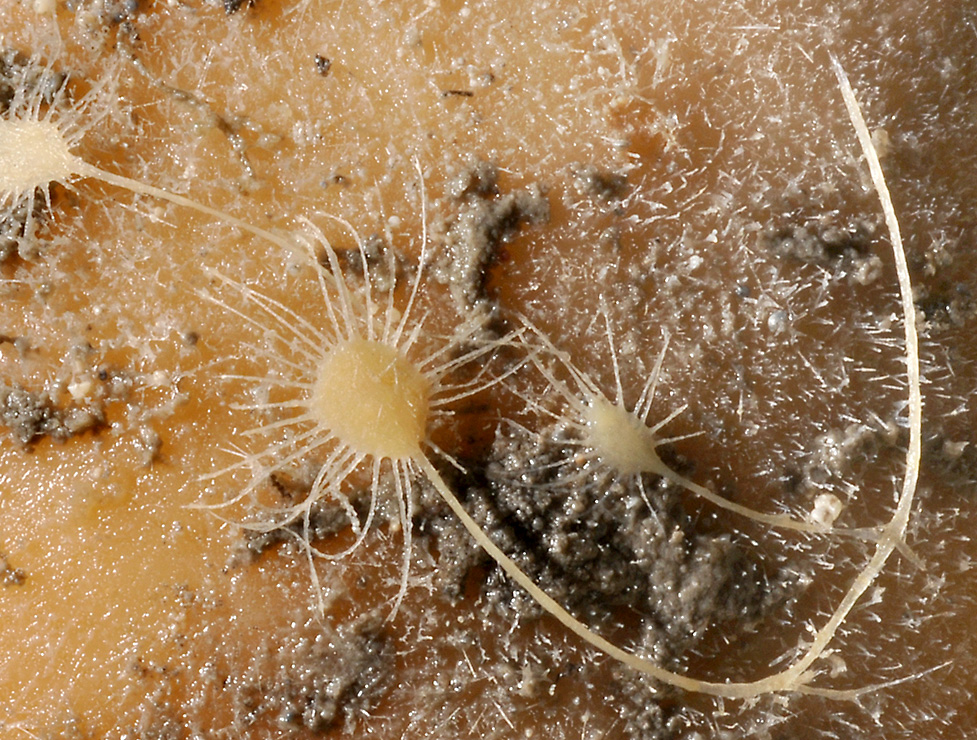Abstract
A new species of guitarfish (Rhinobatos) is described based on a single specimen collected in 2014 from off New Ireland in Papua New Guinea. This specimen represents the first record of the family Rhinobatidae in Papua New Guinean waters. Based on molecular data, the new species appears to be most similar to Rhinobatos whitei (Philippines) and Rhinobatos sainsburyi (northern Australia), but is distinguished based on its coloration, morphology and certain meristic characters.
References
Compagno, L.J.V. & Randall, J.E. (1987) Rhinobatos punctifer, a new species of guitarfish (Rhinobatiformes: Rhinobatidae) from the Red Sea, with notes on the Red Sea batoid fauna. Proceedings of the California Academy of Sciences, Series 4, 44 (14), 335–342.
Last, P.R. (2004) Rhinobatos sainsburyi n.sp. and Aptychotrema timorensis n.sp. – two new shovelnose rays (Batoidea: Rhinobatidae) from the eastern Indian Ocean. Records of the Australian Museum, 56, 201–208.
http://dx.doi.org/10.3853/j.0067-1975.56.2004.1415Last, P.R., Compagno, L.J.V. & Nakaya, K. (2004) Rhinobatos nudidorsalis, a new species of shovelnose ray (Batoidea: Rhinobatidae) from the Mascarene Ridge, central Indian Ocean. Ichthyological Research, 51 (2), 153–158.
http://dx.doi.org/10.1007/s10228-004-0211-0Last, P.R., Corrigan, S. & Naylor, G.J.P. (2014) Rhinobatos whitei, a new shovelnose ray (Batoidea: Rhinobatidae) from the Philippine Archipelago. Zootaxa, 3872 (1), 31–47.
http://dx.doi.org/10.11646/zootaxa.3872.1.3Last, P.R., White, W.T. & Fahmi (2006) Rhinobatos jimbaranensis and R. penggali, two new shovelnose rays (Batoidea: Rhinobatidae) from eastern Indonesia. Cybium, 30 (3), 261–271.
Last, P.R., Séret, B. & Naylor, G.J.P. (2016) A new species of guitarfish, Rhinobatos borneensis sp. nov. with a redefinition of the family-level classification in the order Rhinopristiformes (Chondrichthyes: Batoidea). Zootaxa, 4117 (4), 451–475.
http://dx.doi.org/10.11646/zootaxa.4117.4.1Linnaeus, C. (1758) Systema Naturae, Ed. X. Systema naturae per regna tria naturae, secundum classes, ordines, genera, species, cum characteribus, differentiis, synonymis, locis. Tomus I. Editio decima, reformata. Vol. 1. Impensis Direct. Laurentii Salvii, Holmiae, 824 pp.
Müller, J. & Henle, F.G.J. (1841) Systematische Beschreibung der Plagiostomen. Veit und Comp., Berlin, pp. 103–200.
http://dx.doi.org/10.5962/bhl.title.6906Naylor, G.J.P., Ryburn, J.A., Ferigo, O. & Lopez, A. (2005) Phylogenetic relationships among the major lineages of modern elasmobranchs. In: Hamlett, W.C. (Ed.), Reproductive Biology and Phylogeny of Chondrichthyes: Sharks, Batoids and Chimaeras. Enfield, Science Publishers, pp. 1–25.
Norman, J.R. (1922) Three new fishes from Zululand and Natal, collected by Mr. H. W. Bell Marley; with additions to the fish fauna of Natal. Annals and Magazine of Natural History, Series 9, 9 (52), 318–322.
Norman, J.R. (1926) A synopsis of the rays of the family Rhinobatidae, with a revision of the genus Rhinobatus. Proceedings of the Zoological Society of London, 1926 (4), 941–982.
http://dx.doi.org/10.1111/j.1096-3642.1926.tb02228.xNorman, J.R. (1930) A new ray of the genus Rhinobatus from the Gold Coast. Annals and Magazine of Natural History, Series 10, 6 (32), 226–228.
Norman, J.R. (1931) Four new fishes from the Gold Coast. Annals and Magazine of Natural History, Series 10, 7 (40), 352–359.
http://dx.doi.org/10.1080/00222933108673322Richardson, J. (1846) Report on the ichthyology of the seas of China and Japan. Report of the British Association for the Advancement of Science 15th meeting, [1845], 187–320.
http://dx.doi.org/10.5962/bhl.title.59530

